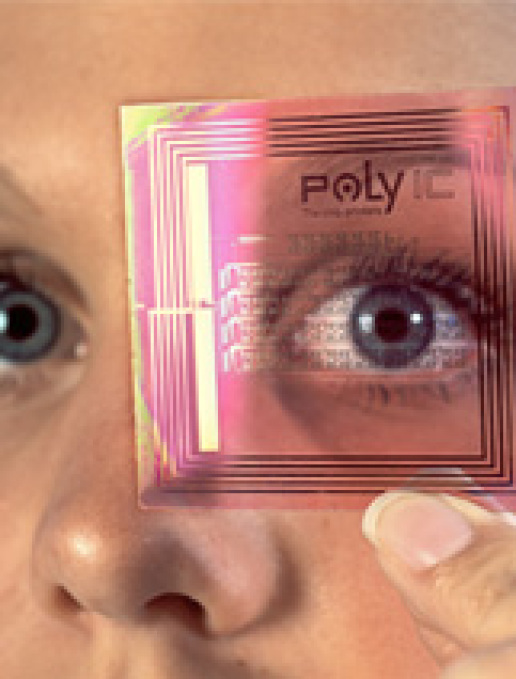
New opportunities for thin films
A cushion of light for major projects
Until recently, the building industry mainly used transparent plastic films for surfacing or strengthening structures, combined with other organic, metallic or mineral materials such as glass. The ethylene tetrafluoroethylene (ETFE) film developed by DuPont in the 70s was a game changer in that respect.
For the first time, a transparent and flexible polymer was able to compete with rigid organic polycarbonate or acrylic resin windows.
Implemented as air cushions set into metal frames, ETFE coating offers designers unprecedented opportunities with regard to developing buildings' climate envelopes.

 Thanks to a mass of less than 1 kg/m2, this material, which is lighter than glass, offers superior transparency combined with protection against UV rays and a wide band of infrared lights. In addition, it has many of the qualities which have made fluoropolymers so successful: high mechanical resistance, anti-adhesive and self-cleaning properties, etc.
Thanks to a mass of less than 1 kg/m2, this material, which is lighter than glass, offers superior transparency combined with protection against UV rays and a wide band of infrared lights. In addition, it has many of the qualities which have made fluoropolymers so successful: high mechanical resistance, anti-adhesive and self-cleaning properties, etc.
ETFE is a tremendous boon for architects and builders looking for innovative and even particularly large-scale projects like recently-built monumental sports, cultural or commercial centres such as the Lyon-Confluence centre in France or the gigantic 150 metre-tall transparent tent of Khan Shatyr erected in Astana, in Kazakhstan.
Windows oscillate between transparency and privacy
 In a period when lifestyles are continually hesitating between a need for transparency, and a need for privacy, curtains are a bit old-hat.
In a period when lifestyles are continually hesitating between a need for transparency, and a need for privacy, curtains are a bit old-hat.
Saint-Gobain seem to have come up with the perfect solution for these modern times: Privalite windows, which can be made to be either transparent, or translucent, at the push of a button.
The window is comprised of two glass plates associated with a central plate of very transparent polymer film whose central polyethylene terephtalate (PET) layer is charged with liquid crystals.
The crystals are sized according to the PET's refractive index and are oriented in the direction of the electric field.
Under electric impulse, they let light through in a perfectly transparent manner. Without the electric field, the liquid crystals' random orientation causes a different refraction to that of the polymer, creating an optical effect similar to that of frosted glass.

Conductive polymers make a strong impression
 Preventing condensation on car windows, improving a screen's tactile response time and more…thanks to printed circuits, these things can now be done at no cost to the visibility of transparent interfaces.
Preventing condensation on car windows, improving a screen's tactile response time and more…thanks to printed circuits, these things can now be done at no cost to the visibility of transparent interfaces.
The new polymer films charged with conductive particles replace electronic circuits and chips integrated into windows and screens.
PolylC, a Bavarian company, born from a partnership between Siemens and the Kurz group, is one of the European pioneers of this technology. The company developed a continuous printing process on a slim transparent polyester film.
 The electronic components are printed with inks charged with metallic particles developed from conductive polymers such as polythiophene (PEDOT-PSS), polyaniline (PANI) and polypyrrole (PPy).
The electronic components are printed with inks charged with metallic particles developed from conductive polymers such as polythiophene (PEDOT-PSS), polyaniline (PANI) and polypyrrole (PPy).
Whether in television or computer screens, publishing, urban signage or sensors in packaging, the applications of this technology make it a guaranteed winner in a market estimated at over two billion Euros…in short, the promised land for the main manufacturers of thin films.
A big energy boost
France-based company Sunpartner Technologies aims for its proprietary Wysips technology to make any surface become a surface which can produce renewable electricity from sunlight. The technology's name is an acronym of "What You See Is Photovoltaic Surface".
The recipe: a unique combination of optical and photovoltaic properties in a transparent and flexible film, which can be integrated into all types of mobile products…and larger surfaces such as windows.
In 2011, its first photovoltaic component achieved 70% transparency with limited energy yields between 2 and 4%, but which are nevertheless sufficient to recharge a mobile phone. A year later, it achieved 90% transparency.






